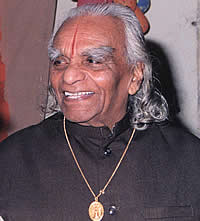Iyengar Yoga

Iyengar Yoga is named after the living master B.K.S. Iyengar and his style and interpretation of teachings of the yoga sutras as penned by the sage Patanjali. One of the main objectives of the yoga sutras is to bring silence to the mind, intellect, and ego. Iyengar is thought of as one of the founding fathers of yoga having been one of the first to bring it to Western culture and having taught so extensively.
Iyengar Yoga puts a strong focus on asanas. It is one of the more precise forms of yoga concerning geometry, body alignment, and proper body mechanics. In comparison to other forms of yoga, the asanas or postures are held for extended periods of time with the idea that the student masters a posture only after having spent sufficient time in it. In line with being precise, Iyengar Yoga makes extensive use of blocks, props, straps, and bolsters such that postures can be supported and done as properly as possible while minimizing the possibility of injury.
This form of yoga includes some instruction on breathing techniques but by no means extensive. Iyengar published a book on pranayam, Light on Pranayam, but it does not demonstrate much in the way of a personal journey. There is no discussion on possible pitfalls and how to recognize and deal with the strange things that can arise form daily pranayam. The book just seems to be a translation of some older text.